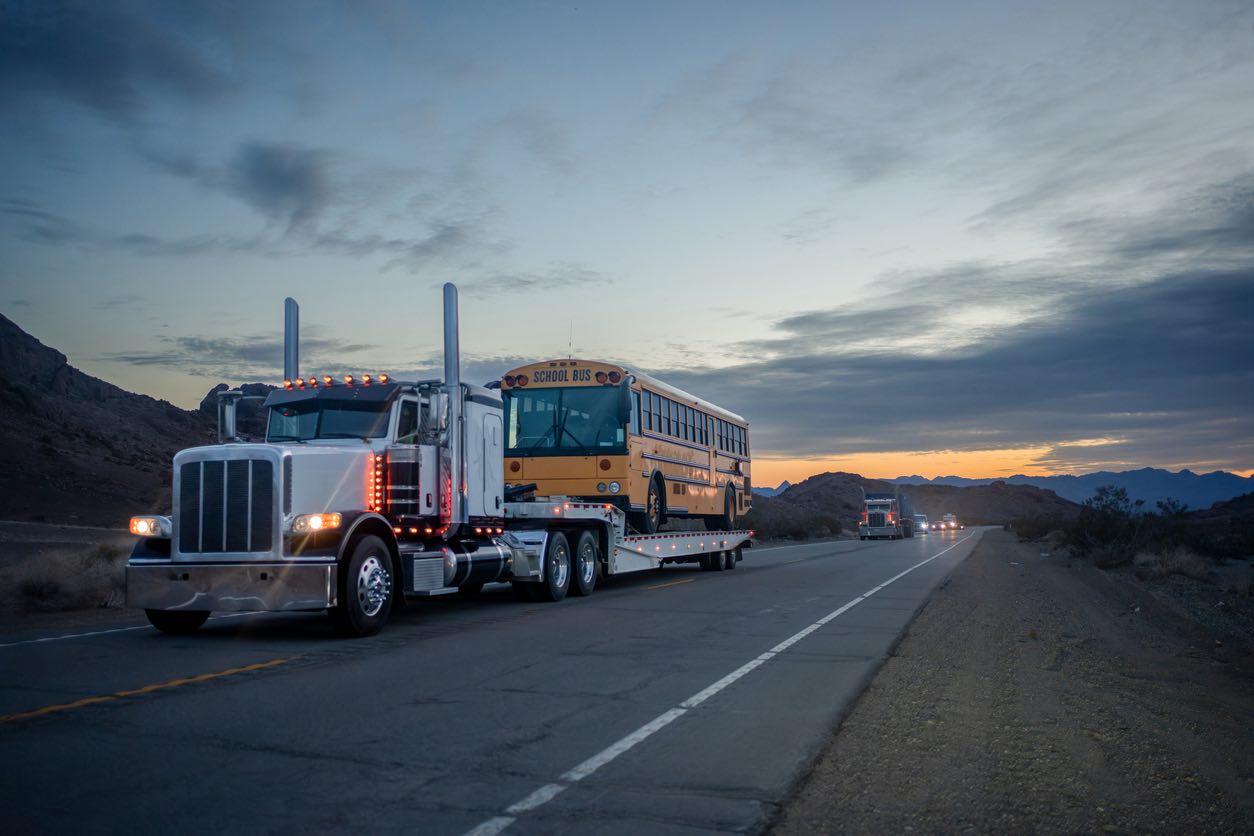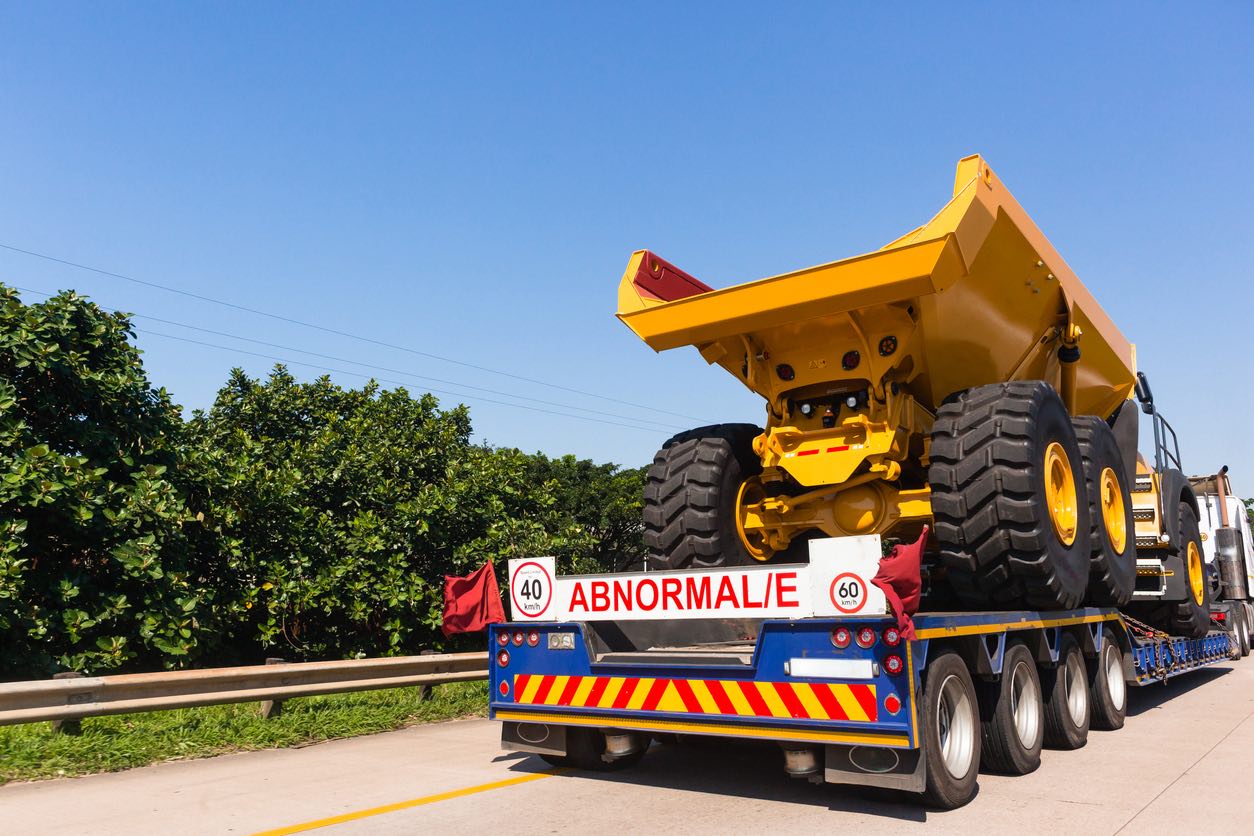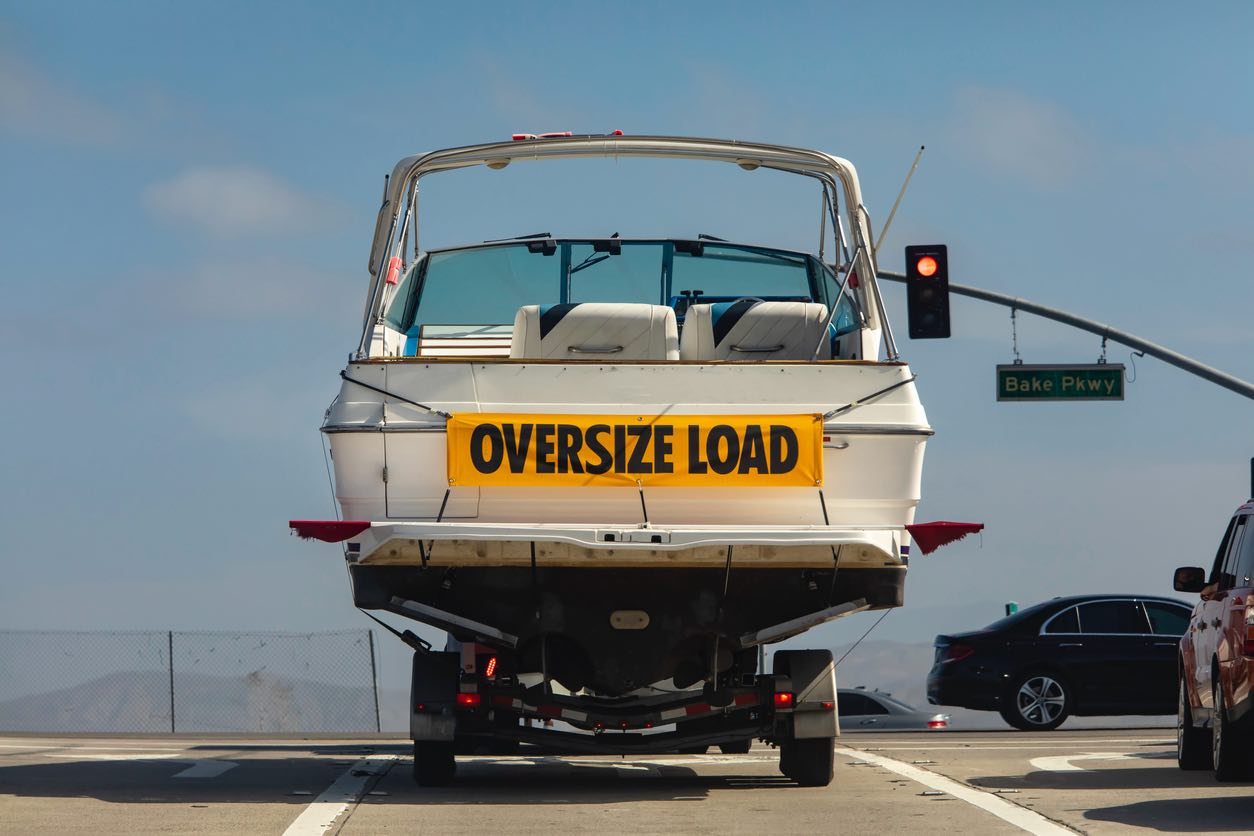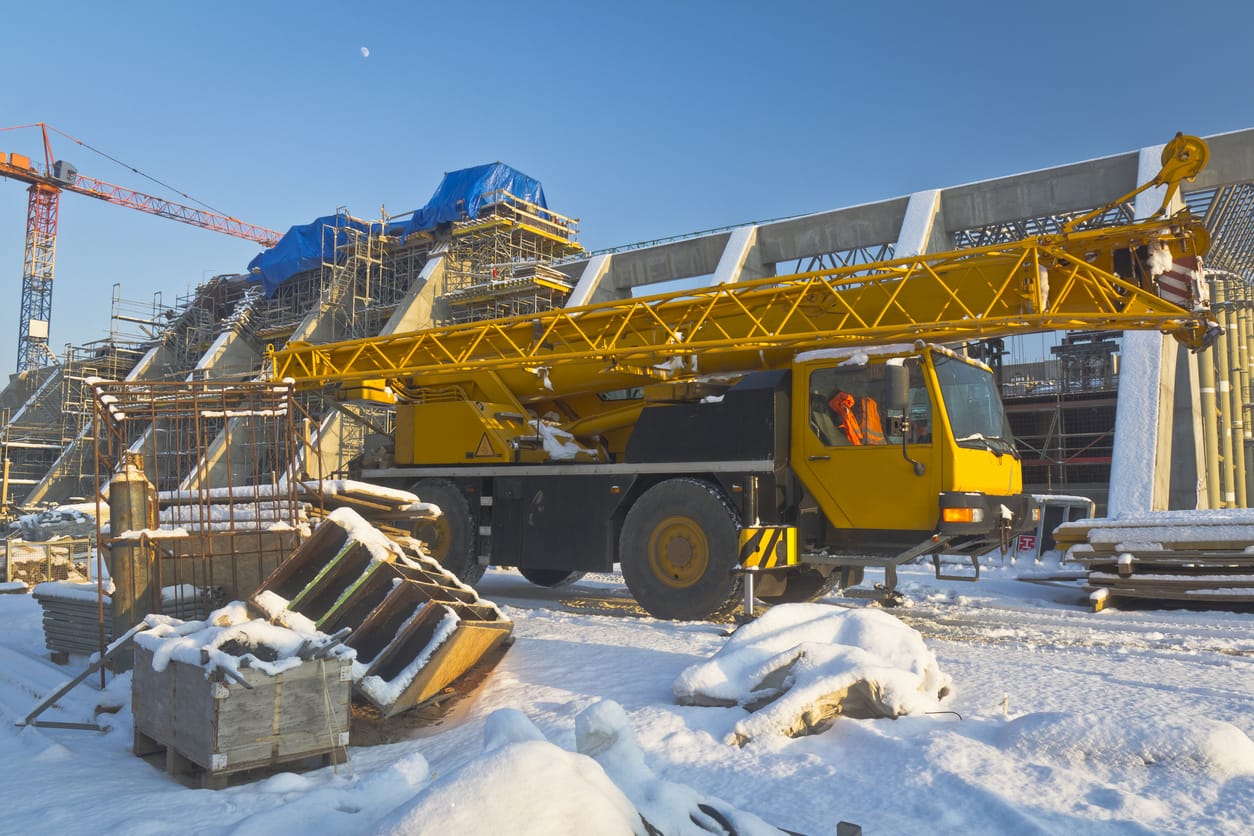Anyone involved in the large-scale transportation of goods across the United States must be well-versed in the regulations governing wide and oversized loads in the intricate domain of logistics. Inaccurate understanding of these differences may lead to costly fines and delays, which may have an adverse effect on the general effectiveness and legality of transportation operations. In order to ensure compliance and safe passage, we will go over the most significant differences, rules, and considerations that must be made while transporting wide and oversized cargoes in this blog post.

When it comes to logistics and transportation, understanding the precise criteria for what constitutes a wide load is essential. This information guarantees adherence to local, state, and federal laws, averting expensive penalties and delays. This section will explore the definition of a wide load, the permits required for its transportation, and some typical cases to put these ideas into context.
What Defines a Wide Load?
Any load that satisfies the legal restrictions on height and weight but beyond the conventional maximum width of 8.5 feet (2.6 meters) permitted on roadways is considered a wide load. It is important to understand that these maximum width restrictions might differ dramatically between states due to local road limitations and safety considerations. Transporters must thus be well-versed in the rules pertaining to the routes they want to travel.
Permits and Route Restrictions
It takes more than just loading and driving to move wide loads. Usually, special permits from the appropriate state authorities are needed. These permits guarantee that the carrier has recognized and factored in the unique needs and constraints of the route. The transportation agency of each state establishes its own regulations, which may include routes that are pre-approved and avoid roads that are unsafe for carrying wide loads. In addition to facing heavy financial penalties, breaking these rules may seriously jeopardize public safety.
Examples of Wide Loads
Wide loads include a range of large items that need to be handled carefully when being transported. Mobile homes, for example, fall under this category as they must be relocated from production sites to final residential plots. Additionally included in the category of wide loads are enormous construction equipment like bulldozers and large dump trucks. Agricultural implements like harvesters and bailers, as well as recreational items such as boats, are other examples. Every category necessitates meticulous logistical preparation, frequently involving the use of specialized transportation tools such as flatbed trailers, which offer the necessary space and support.

It takes in-depth knowledge of certain laws and safety precautions to successfully navigate the challenges involved in moving oversize loads. In order to offer a better understanding of the difficulties and requirements associated with their transportation, this section will examine the definition of an oversized load, the necessary safety precautions and permits, and instances of such loads.
What Defines an Oversize Load?
Exceeding the permitted limitations for width (8.5 feet), length (53 feet), height (13.5 feet), or weight (80,000 pounds) is what defines an oversized load. The definition of an oversized load in the United States varies from state to state, thus proportions that are acceptable in one jurisdiction may not be in another. Because of this unpredictability, shippers must confirm state-specific laws before arranging a transportation route.
Safety Measures and Permits
Carriers that want to move an oversize load must abide by strict safety guidelines meant to safeguard infrastructure and other drivers. Obtaining the required permits from each state the shipment will transit through is part of this compliance. These permits are essential since they frequently include requirements like travel windows, escort car needs, and routes that must be taken in order to reduce the hazards connected with carrying such large cargoes.
Examples of Oversize Loads
Large structural elements like steel beams, industrial pipes, heavy machinery, and prefabricated dwellings are a few examples of oversized loads. These items’ varied nature frequently calls for specific handling methods and transportation tools. For example, lowboy trailers may be necessary for heavy machinery due to their lower center of gravity, whereas flatbed trailers are usually used for prefabricated dwellings. Every kind of shipment presents a different logistical difficulty and emphasizes the necessity of meticulous preparation and execution to guarantee safe delivery.

It is crucial to comprehend the unique needs and difficulties posed by wide and oversize loads while organizing the logistics of transporting massive items across state boundaries or within the same state in the United States. Despite their similarity in pronunciation, the two phrases really allude to distinct regulatory requirements and transportation issues. The key distinctions between the two are discussed in this section, with particular attention paid to size requirements, transportation needs, and handling and safety procedures.
Size Specifications
Both kinds of loads are larger than the typical dimensions, but wide loads are larger than the typical 8.5-foot width restrictions. This classification takes neither weight nor height into account; it is solely based on width. However, oversize loads may also surpass weight, length, or height restrictions. The issues associated with oversized loads are more variable since they can surpass any combination of the typical dimensions of 8.5 feet wide, 53 feet long, 13.5 feet tall, or 80,000 pounds.
Transportation Requirements
Wide loads are usually transported on designated routes on flatbed trailers, which are selected for their structurally unrestricted capacity to carry larger items. Authorities frequently preapprove these routes in order to guarantee that the cargo may move through without interfering with traffic or road infrastructure. On the other hand, oversize loads can often travel on numerous routes and may require a variety of trailers due to their different character in terms of height and length. To maintain road safety, they could additionally need police or escort cars in addition to specialized permits for wide loads.
Safety and Handling
Wide loads must be transported with special safety precautions, such appropriate illumination and signs, to notify other drivers of their presence. To improve control and safety, especially while navigating bends and underpasses, these loads frequently travel at slower speeds. However, there may be stricter regulations and safety precautions for oversized cargoes. Oversize loads may require police escorts and road closures, depending on their size and the route taken, to handle the heightened danger they represent to public safety. This is particularly true for loads that significantly exceed normal dimensions or loads that pass through regions with a high volume of traffic or population density.
To guarantee that transportation is both effective and complies with local, state, and federal laws, each kind of cargo requires meticulous planning and adherence to safety and legal requirements. It is easier for logistics managers, drivers, and businesses to plan appropriately and prevent fines or mishaps during transportation when they are aware of these important distinctions.

When preparing to transport wide or oversize loads, a number of important variables must be considered to ensure a smooth and lawful transit. These factors include being aware of the applicable laws, identifying any time limits on travel, and using pilot cars for security. Every component is essential to handling the logistical difficulties brought on by large-scale shipments and avoiding potential fines for noncompliance.
Legal Hurdles and Logistics
Legal regulations must be navigated and understood while shipping wide or oversize loads. Interstate transportation may be made more difficult by the various rules and permission requirements that exist in each state. This procedure may be streamlined by using a permitting company or getting in touch with state permitting organizations directly. This will guarantee that all legalities are taken care of before the trip starts. By taking preventative measures, expensive penalties and delays may be avoided, leading to a more efficient shipping procedure.
Travel Times and Restrictions
Restrictions on when oversize loads can travel are enforced by several states; they are often during off-peak hours to reduce traffic disturbances. Understanding these limitations is essential for creating transportation plans as it influences the choice and timing of routes. For instance, certain areas would only permit such loads on weekends and holidays, or they might limit travel to after-hours or non-business hours on weekdays. Not only is this preparation necessary for compliance, but it also optimizes transportation logistics to avert peak traffic times and any dangers.
Importance of Pilot Vehicles
For the wide load, the transport crew, and other drivers on the road, pilot cars are essential. They can provide a heads-up warning to other drivers and assist in controlling the space around the load, particularly in tight corridors or when navigating through densely populated regions. Pilot cars frequently have lights and signs installed to notify oncoming traffic that an oversize cargo is there. In order to ensure that the cargo travels through traffic safely and effectively, they also work in tandem with the primary transport vehicle to address any urgent road difficulties.
All things considered, transporting wide and oversize loads necessitates careful preparation and respect to certain laws. Shippers may make sure that their cargo arrives at its destination safely and compliantly by taking into account four important factors: travel limits, legal impediments, and the deployment of pilot cars.

A complicated web of safety, legal, and logistical challenges must be navigated while transporting wide and oversize loads. It’s critical to comprehend the differences between these load kinds and follow strict legal criteria. In addition to reducing hazards and guaranteeing safety, this commitment also helps to avoid the heavy fines that might result from non-compliance. Such transportations provide a variety of difficulties, including careful planning, obtaining the required permits, and coordinating travel schedules in order to adhere to municipal and state legislation. To guarantee that the transportation process is effective and complies with all laws, each stage must be carefully monitored.
Selecting the best heavy haul shipping company is crucial in this complex industry, and Ship A Car, Inc. stands out as the top option. SAC is distinguished for its dedication to quality by having an A+ rating from the Better Business Bureau and a history of five-star ratings from clients. Ship A Car, Inc. offers unrivaled equipment and experience for any size job, whether it is moving a large crane or a tiny tractor. Their expertise ensures that every load is handled with the highest care and professionalism, regardless of its size or complexity. By entrusting Ship A Car, Inc. with your heavy haul requirements, you can be confident that your cargo will be transported securely and in accordance with all applicable rules and regulations, making them the go-to supplier in the logistics sector.
Q: What is the difference between a wide load and an oversize load?
A: An oversize load may exceed the parameters for height, length, or weight, but a wide load merely exceeds the width constraints. Wide loads are more common than oversize loads.
Q: How do I obtain the necessary permits for transporting a wide or oversize load?
A: The state transportation agencies or a permitting service that specializes in logistics are the two available options for acquiring permits.
Q: What are the typical restrictions on travel times for wide and oversize loads?
A: Certain restrictions, which might vary widely from state to state, may apply to travel throughout the night, on the weekend, or on holidays.



